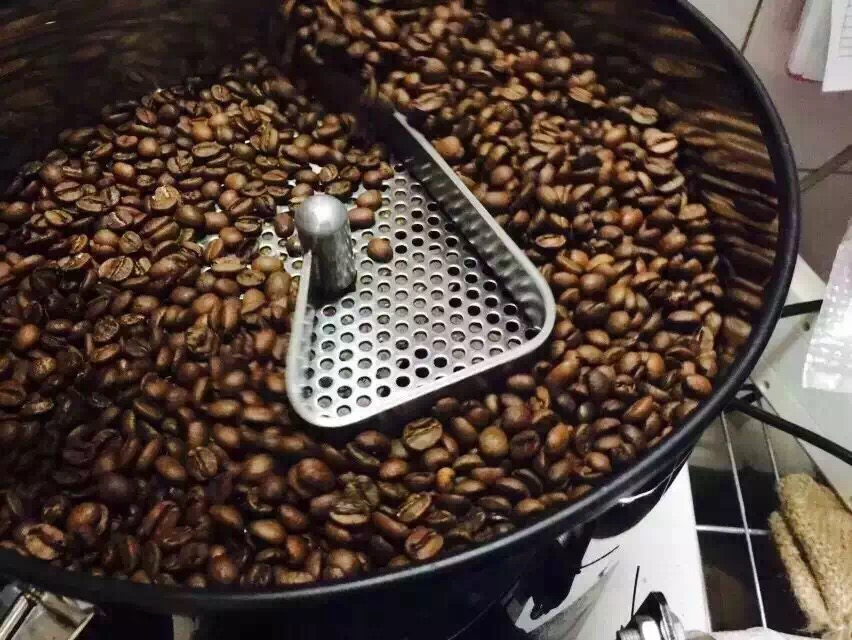Interested in coffee roasting? Look here-- Common sense of Coffee roasting (part two)
Guide to Caxiang: as a general minority, we come into contact with more baristas who make coffee for us at the bar. We are still very strange to coffee roasters and coffee roasters, because we do not understand it, so we will feel very mysterious and profound. Do not deny that coffee roasting is indeed a profound knowledge, but as long as you are willing to understand, it is not mysterious!
(2) main brands of baking machines
1. Probat in Germany
Old brands, large and medium-sized machines, semi-automatic, full-automatic various types, sophisticated design, high price.
two。 Japan fuji-royal
The products of fuji Company of Japan also have good performance, but the same price is not cheap.
(3) brief introduction of coffee Ming roaster
1kg semi-direct fire semi-hot air roaster is a coffee machine produced by Taihuan Company in Korea, although there is still a certain gap between performance and probat, but compared with its more affordable pricing, this machine is still good value for money, it has power heating and gas heating, with uniform heating, high thermal efficiency performance, and its external game design is also very exquisite amplifier.
Fifth, the reactions and changes in the baking process.
1. Drying
When the raw bean is heated, the water vapor in the raw bean will evaporate, and the raw bean will turn white from green at about 135 degrees Celsius.
two。 dehydration
As the heating goes on, the raw beans change from green to light yellow, and when the temperature reaches about 160 degrees, the aroma of baked grain will be emitted. After continuous heating, the beans turn light brown.
3. An explosion
After about 190 degrees dehydration is completed, a burst occurs due to the rupture of the cell wall caused by internal thermal expansion, and a series of thermal decomposition reactions occur inside the beans, in which the caramelization brings the sweetness, dark brown and mellowness of the coffee beans. the explosion lasts about a minute and a half.
4. Second explosion
As the heating goes on, it enters the "second explosion", and a more violent reaction will take place inside the bean. And give off a lot of heat. With the end of the second explosion, the raw bean has basically turned black, the bean body has expanded to 1.5 times that of the original, the surface is oily, and the weight is reduced to 12%, about 20%.
5. Stop it
Usually the baking ends about a minute after the second explosion, when the temperature reaches 230 degrees, which will be a deep French or Italian baking, which may cause the coffee beans to ignite spontaneously when the temperature exceeds 230 degrees Celsius.
six。 Division standard of baking degree
1, roughly divided into four degrees: shallow baking, medium baking, deep baking and heavy baking.
2, each category can be subdivided into two categories, a total of eight categories
Shallow baking:
Light light baking
Cinema cinnamon baking
Baking in:
Medium medium baking
Medium and deep baking in High
Deep baking:
City city baking
Full-city city-wide baking
Important Notice :
前街咖啡 FrontStreet Coffee has moved to new addredd:
FrontStreet Coffee Address: 315,Donghua East Road,GuangZhou
Tel:020 38364473
- Prev

Interested in coffee roasting? Look here-- Common sense of Coffee roasting (part I)
Guide to Caxiang: as a general minority, we come into contact with more baristas who make coffee for us at the bar. We are still very strange to coffee roasters and coffee roasters, because we do not understand it, so we will feel very mysterious and profound. However, do not deny that coffee roasting is indeed a profound knowledge, but as long as you are willing to understand, it is not mysterious! one。
- Next

The production process of Starbucks caramel macchiato! GIF moving picture!
Starbucks caramel macchiato production process! 1, take cup 2, mark, my dear, 500ml! 3, take vanilla sherbet, two panes? 4, extract espresso, this automatic machine is still very powerful! 5, extract espresso, a lot of it. 6. Add hot milk and foam and I don't want to say anything. 7, add coffee, deliberately leave a mark, because, Jiao
Related
- What is the meaning of lactic acid fermentation with coffee bean treatment?
- How to judge the state of foam by sound?
- How does the latte pull out the unicorn pattern? Come to get for a little trick to improve the flower pull!
- Will flower pulling affect the taste of the latte?
- Do you know the history of coffee?
- The difference between honey treatment and sun washing what is raisin honey treatment?
- What kind of milk can a novice use to make coffee foam to keep the foam longer? The correct method and skills of milking tutorial sharing
- Why do washed coffee beans taste sour? Flavor characteristics of washed Coffee
- Introduction to the skill of how to practice the size and height of water injection around the circle of hand-brewed coffee
- How do beginners practice coffee flower drawing from scratch?

